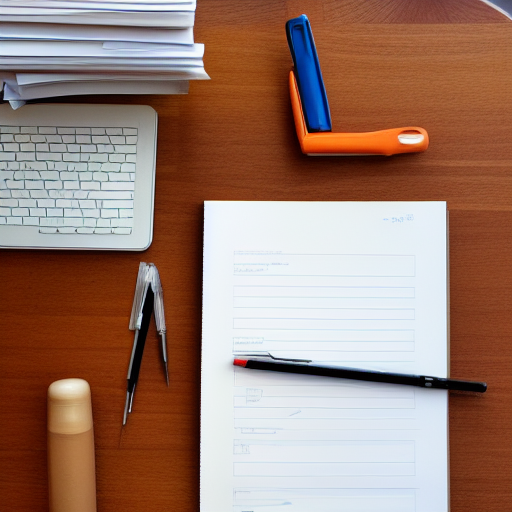Organizing paperwork in your home requires a few steps. You can start by collecting old papers, re-filing them, and storing important documents in proper folders. Once the paperwork is organized, you can file away unnecessary pieces of paper and sort out the important papers. You can find office supplies at your local office supply store, and you can also create a system of separating new and old papers.
10 ways to organize paperwork
Paperwork can be very daunting, but there are easy ways to organize it. Use an outbox to keep completed paperwork in, and an inbox for to-do lists. You can also file or toss items that are not urgent any more. By using a simple system, you’ll soon have a desk that is clutter-free.
First, start by sorting through paper. This will help you find important files easily. Make piles of similar types of papers, or combine certain subject areas into larger piles. Label each pile, or file folder with a subject heading. For example, a file containing bills and receipts should be labeled “to do,” “to pay,” “to file,” and “to read.”
Then, sort the papers into categories. If you find a lot of unneeded paper, put them in the recycling bin. If you have sensitive documents, shred them. If you don’t have a shredder, you can also have them shredded at a store. Once the paperwork is properly organized, it will be easier to file it.
You can also use a communication center to keep important documents organized. For example, you could use a color-coded system to identify family members. You can also set a central location for a communication center. This will allow you to separate the family and personal correspondence and create a more organized environment for the entire family. Using a communication center will also free up valuable storage space in your home. This way, you can dedicate certain areas to important items and keep everything in one place.
Another great way to organize paperwork is to label everything. Labeling your papers is important because it will help you find them much easier. Labels will also help you know what type of paper you have and where it needs to go. You can also label the papers with colors, which will make it easier to identify the different categories.
Office supplies you can find at most office supply stores
Office supplies can make an office more organized and efficient. They can help you label items and store important papers. They also help you keep everything together and make it easier to find documents. Using these items will make your work easier and keep you in the right frame of mind.
Office supplies include file folders and binders. These items make it easy to organize paperwork by color-coding. You can also purchase hanger files and expandable file folders to keep all your documents together. You can also purchase notebooks, such as journals and composition notebooks, to keep your notes organized and safe. Some notebooks have smart features that make taking notes faster and easier. They also come in multiple paper types and sizes.
Office supplies are essential for running a small business. Whether you are a freelancer or are working for a corporation, there are countless products available. For example, you can get different sizes and colors of paper, which can make printing documents easier. Organizing storage is another key to keeping your office organized. You can color-code different materials, or label them according to their level of usage. You can also use the walls of your office to place white boards, bulletin boards, and wall calendars. These office supplies can help keep your office running smoothly.
Office supplies you can find at most office supply shops can also help you stay on top of your paperwork. For example, non-skid paper clips can be used to hold papers in place when filing. They are rust-resistant and durable and have non-slip bases. They can also be used to make quick notes during meetings and are easy to differentiate from other paper.
Using a system to separate old from new paper
If you’re trying to keep your files organized, using a system to separate old and new papers is essential. You can also use a color-coding system to better identify which files belong together. For example, if you keep a lot of home-related paperwork, assign a color-code to the folders that contain those documents. You can also file related documents in a different shade of the same color. The more categories you create, the easier it will be to find what you’re looking for. You can also create an index for your files, which will make it easier to keep track of your system and prevent misfiling.
When organizing your papers, make sure you make room for sorting and creating piles. Make sure you have ample space, as you may want to move some items to another location once you’re finished. If you’re working on a big paper organizing project, you should clear a table in the living room, or set up card tables in the dining room. For important documents, you’ll want to make sure you’ve made a permanent pile for them. However, you may want to consider making indefinite piles for documents that you won’t regularly access.
Keeping incoming papers organized
Paper organizing requires creating a dedicated space in your home or office where you can collect and sort incoming papers. A kitchen or entryway is a great option for this purpose. Gather all incoming papers and receipts into a single area, sorting each piece into the appropriate bin. Next, label all paper piles with their destination. For example, you can label a plastic bin for “Keep” papers and a cardboard box for “Recycle+Shred.”
Keeping incoming papers organized isn’t as difficult as it may sound. Start by creating a system that works for you. Label folders by type and month, and separate like items by folder. You can also decide whether you want to store physical documents or convert them into digital files. You can scan your documents into digital files, or upload them to digital platforms like Evernote.
To avoid the temptation of adding more paper to your inbox, organize your papers by their category. You can keep bills and other long-term papers in one file, while storing other items in another. By separating papers by category, you can avoid tripping over papers you don’t need.
Incoming papers can take up valuable space in your home, so get a system for keeping them organized. It’s not easy to eliminate paper clutter completely, but you can start by setting up a designated place for them. This can be as simple as a small bin in your entryway or a kitchen counter. Just be sure that everyone in your home knows where to place these important papers.
Using a basket to organize paperwork
A basket is a great way to organize papers and keep them visible. It is also helpful for keeping receipts, which are very important. A small basket is a great way to keep these easily accessible, although if you have too many, you may want to use a dresser or purse to hold them. You can also use a scanner to digitize files so that you can access them easily.
Another way to use a basket is to keep a “To Be Filed” basket in an accessible location in your office. If you keep your basket near your desk, you can drop papers off in it as you find them. Try to set aside time each week to organize your paperwork.
A Sunday Basket is another useful way to organize loose papers. This type of basket can hold similar items and can be stacked or layered for easy access. For items you need to access often, choose an open basket instead of a layered, covered basket. To organize files in a more effective way, consider using a filing system that includes binders and file folders. You can even use color-coded schemes to keep your paperwork easily accessible.
A large basket is another great way to store items that are cumbersome. A large basket can hold items like cutting boards and books. In addition to storing the items that you need frequently, it also keeps the clutter from spreading out all over your floor. You can also hang a basket near your front door to remind yourself of where you put your keys each time you need them.













